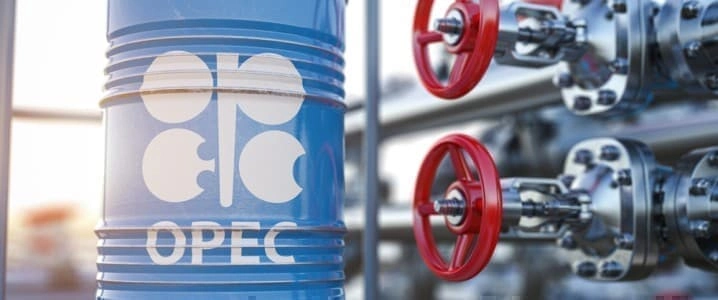Will OPEC Cut Oil Output On Labor Day?

OPEC is meeting on September 5 to discuss the state of the oil market.
The cartel is considering slashing oil production.
Reports of where oil demand is heading remain mixed.
Saudi Arabia’s signal from two weeks ago that OPEC+ could decide to cut production at any time, in any form, managed to lift Brent oil prices to above $100 per barrel for around a week.
But this week, fresh lockdowns in China, intensified fears of recession, and guidance that the Fed will continue with the large key rate hikes sent oil prices tumbling to the low $90s.
While OPEC insists that oil demand is robust and will be so through the end of the year, data suggests that demand in the world’s top oil importer, China, has been weak this summer amid COVID lockdowns and slowing factory activity.
Overall Asian crude imports are estimated to have slowed in August from July, with imports in India, the world’s third-largest crude importer, also down month on month, according to Refinitiv Oil Research data cited by Reuters’ Asia Commodities and Energy Columnist Clyde Russell.
OPEC+ is meeting on September 5 for its regular monthly gathering to assess market conditions and decide how to proceed with the pact which currently expires in December this year. The group, in theory, rolled back by the end of August all the massive cuts from May 2020, but it’s estimated to be 2.9 million barrels per day (bpd) below the collective target.
Now the million-dollar question is: Will there be new cuts? And will cuts help support what looks like a softening physical crude market?
Per a Bloomberg survey of 19 industry analysts, OPEC+ is expected to keep the oil output target for October at the same level as in September when they meet next week.
Moreover, refiners in Asia expect Saudi Arabia to slash the price of its flagship grade to Asia for October amid lackluster fuel demand and increased competition from crude from other regions. If next week Saudi Aramco indeed slashes its prices, it would be an admission of a weakening demand for Middle Eastern crude in the key oil importing region, Asia.
OPEC insists that oil demand is strong. Global oil demand is still robust and will be such through the end of this year, OPEC Secretary General Haitham al-Ghais told Reuters last month, noting that the recent sell-offs didn’t reflect fundamentals and were driven by fear.
But the latest data compiled by Refinitiv paints a different picture.
Chinese imports in August are expected to be only slightly above the July arrivals, and the June-August overall imports are estimated at around 1.5 million bpd below the 2021 average rate of purchases, Reuters’ Russell notes.
In July, crude throughput at Chinese refineries slumped to the lowest level since the height of the pandemic in March 2020, amid unplanned facility outages and lower processing rates at independent refiners due to declining refining margins. A new round of tax probes on private refiners, the so-called teapots, could slow down further the crude processing rates at the world’s top crude oil importer, while this week’s new lockdowns in several large cities are not helping demand, either.
Fears of demand destruction with slowing industrial activity not only in China, but also in Europe and the U.S., sent this week oil prices down to the levels from before August 21 when Saudi Energy Minister, Prince Abdulaziz bin Salman, said that OPEC+ was ready to cut production at any time in any form if it believes it would bring stability to the “schizophrenic” oil market.
If OPEC+ surprises most market observers and does announce cuts on September 5, it could support oil prices for some time. However, the more likely outcome of Monday’s meeting could be a wait-and-see approach and a vague statement of readiness to do whatever it takes to “stabilize” oil prices, which in OPEC+’s parlance typically means “lift” oil prices.
Two large uncertainties are hanging over the market apart from where demand will go from here, and they could prompt OPEC+ to wait for more clarity ahead of announcing possible production cuts. These are the so-called Iranian nuclear deal and the oil supply from key OPEC+ member Russia, which could dip from very resilient current levels once the EU embargo on seaborne Russian crude and fuel imports comes into full force in early 2023 and countries announce a price cap on Russian oil.




